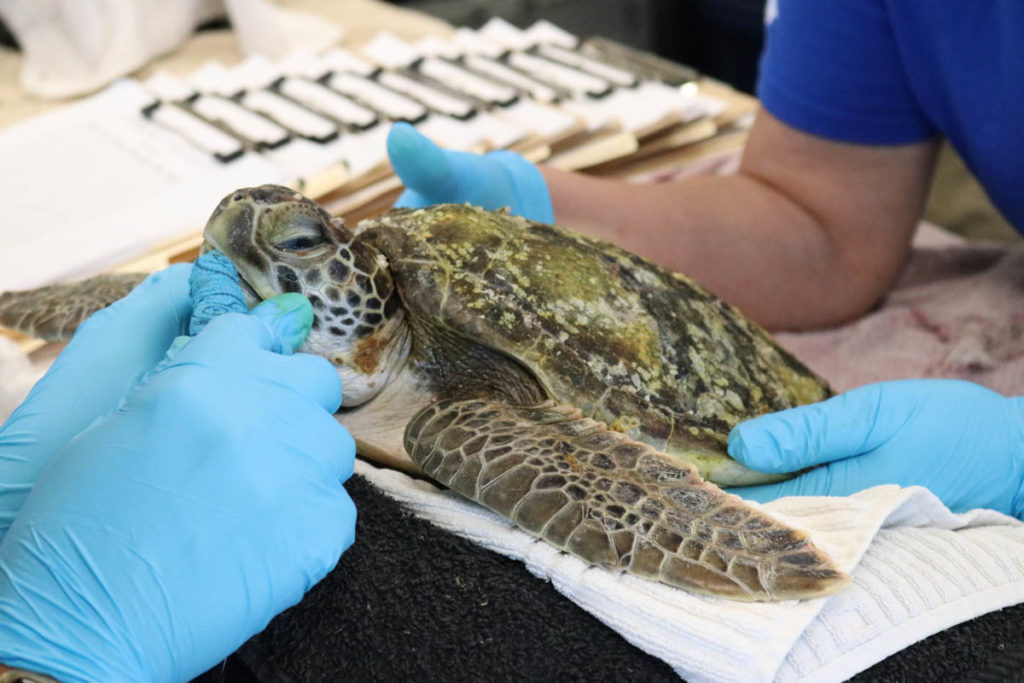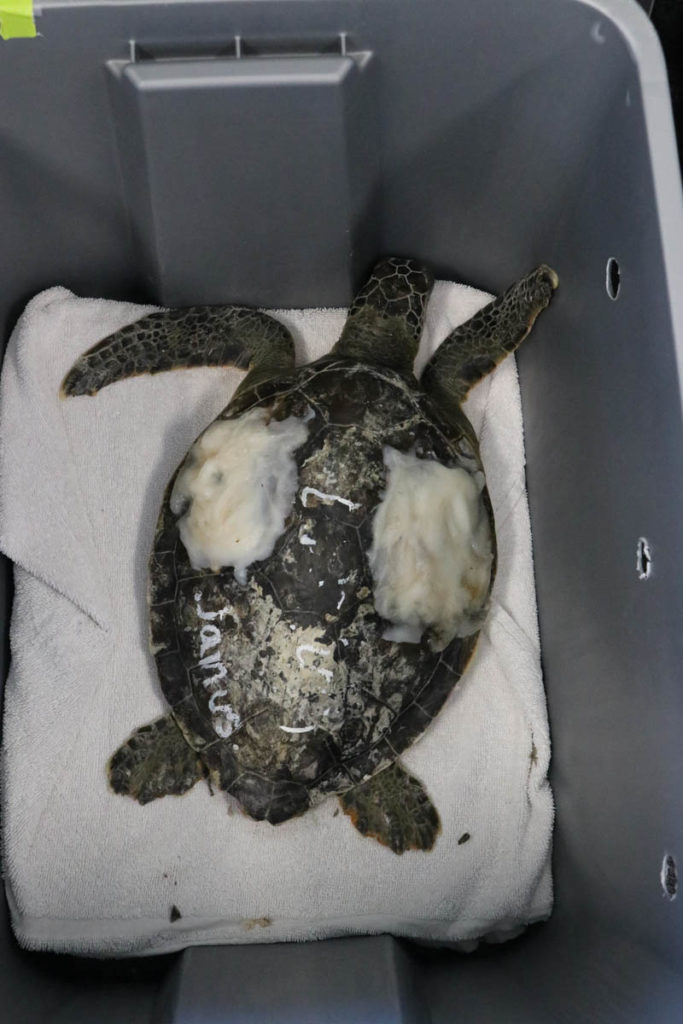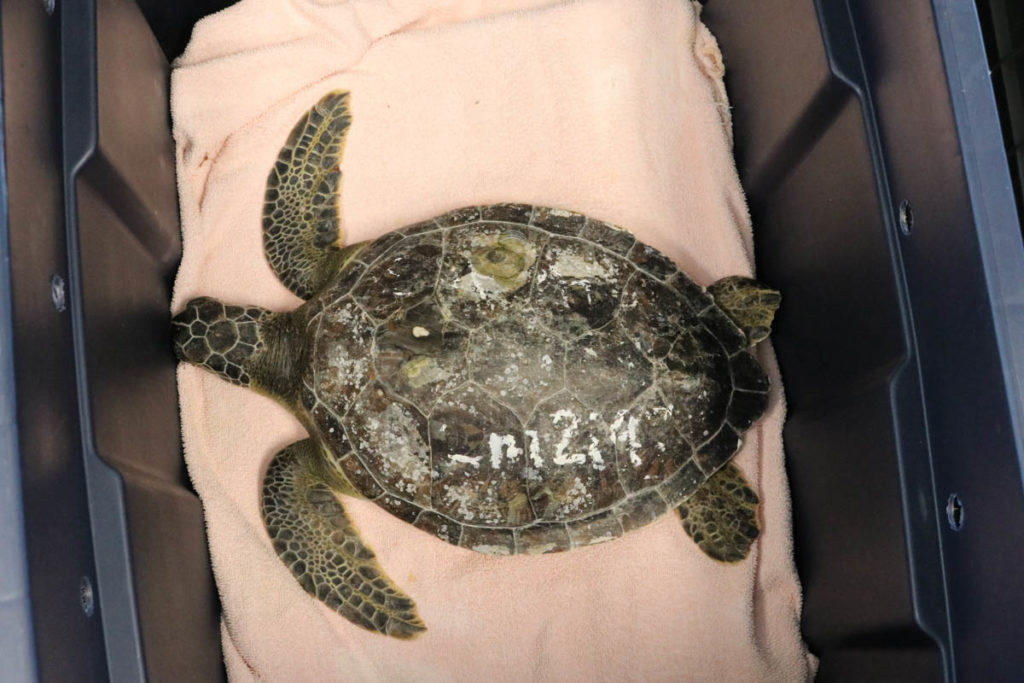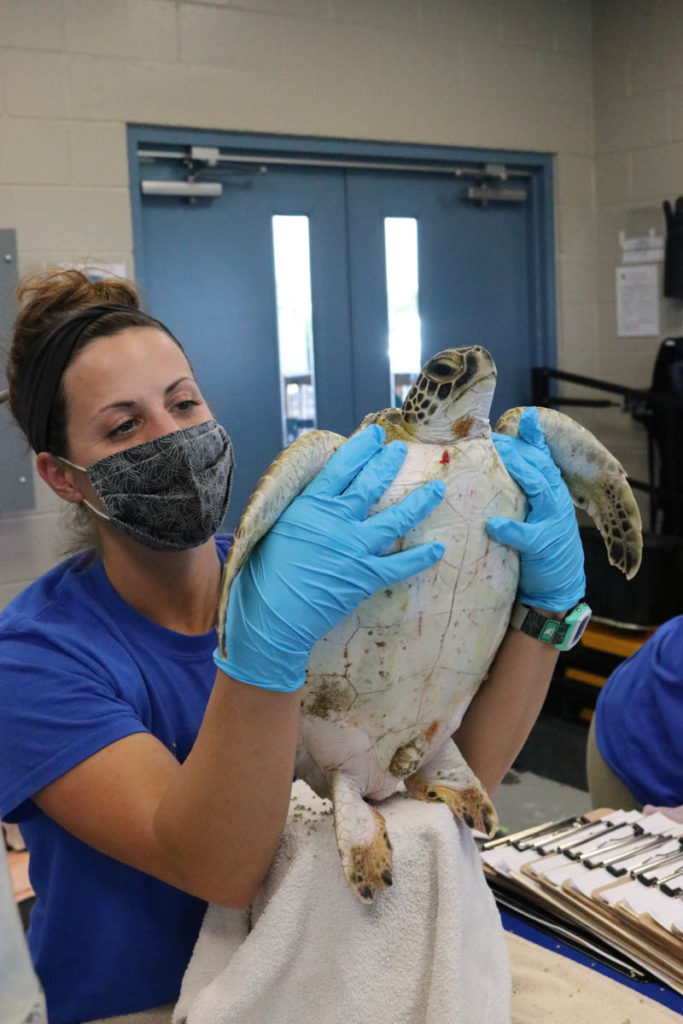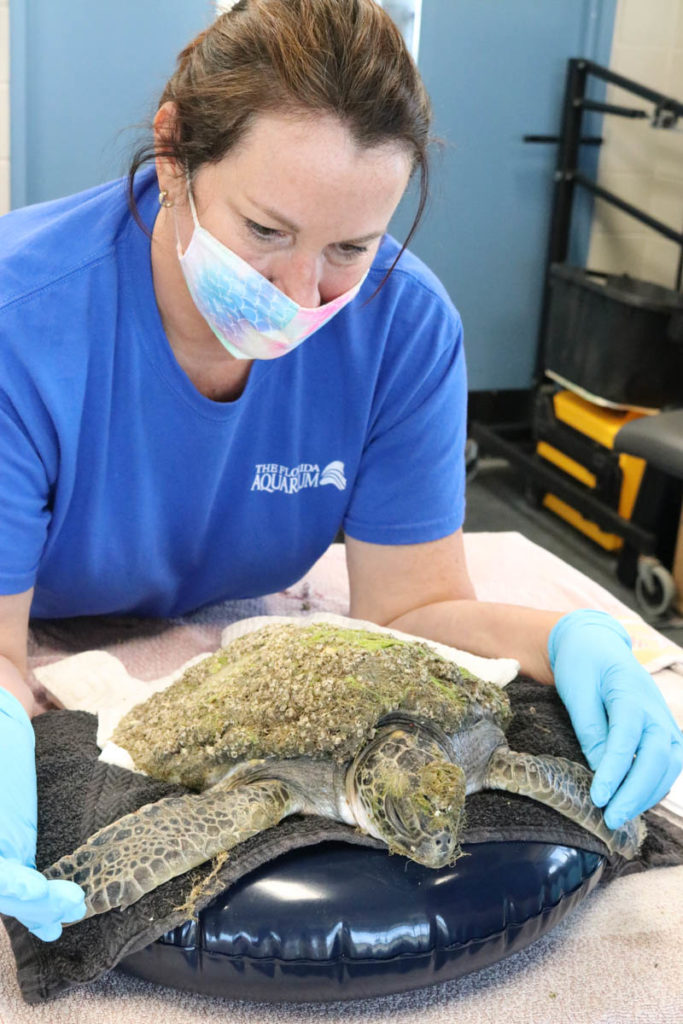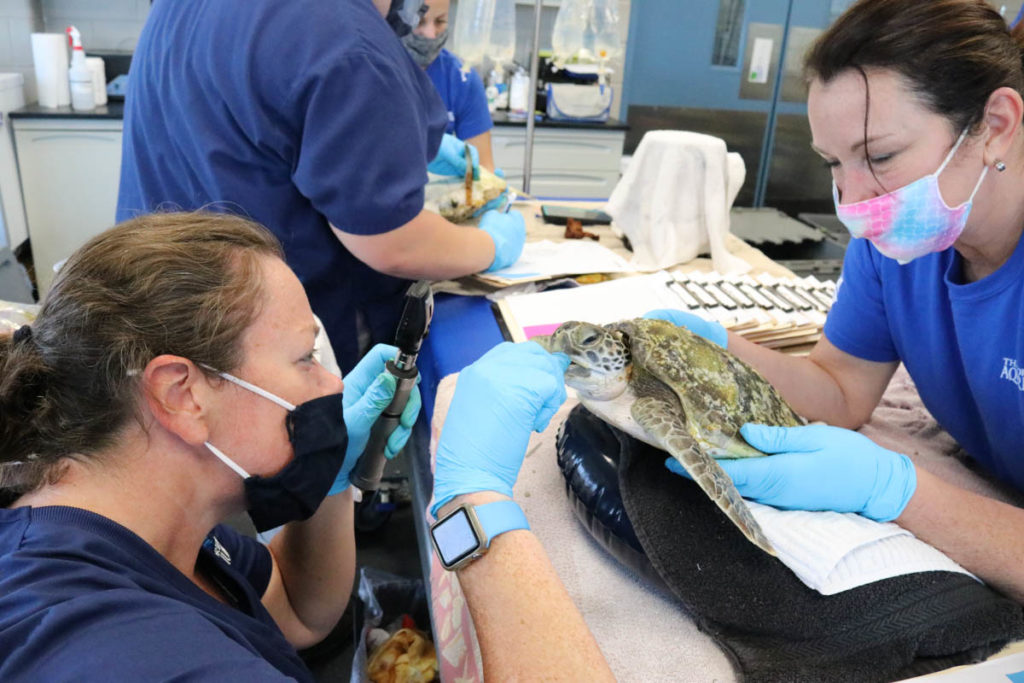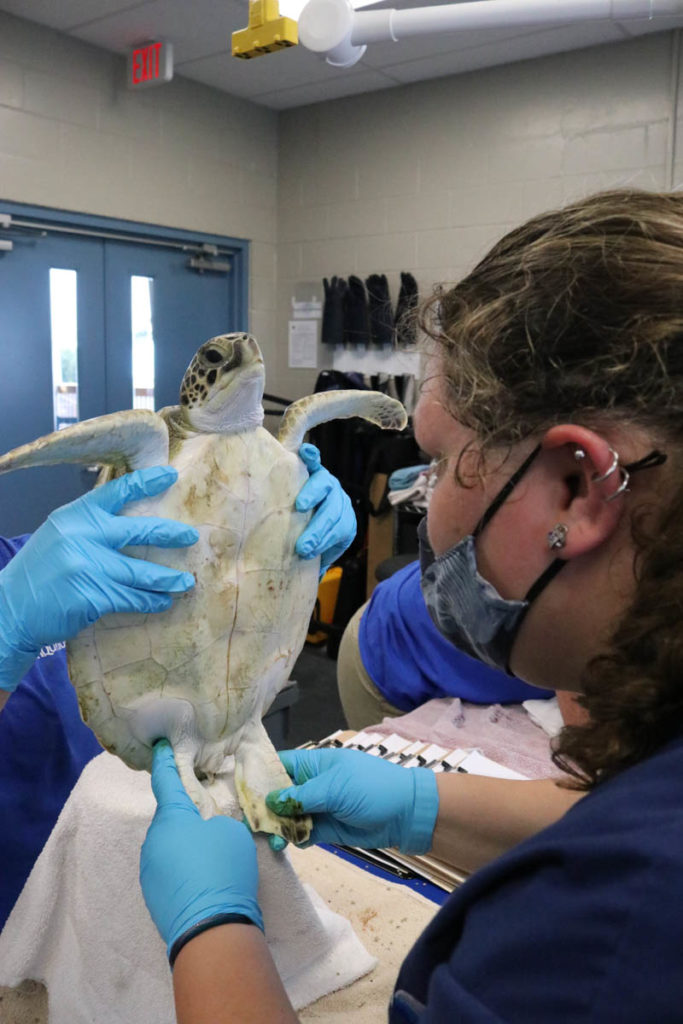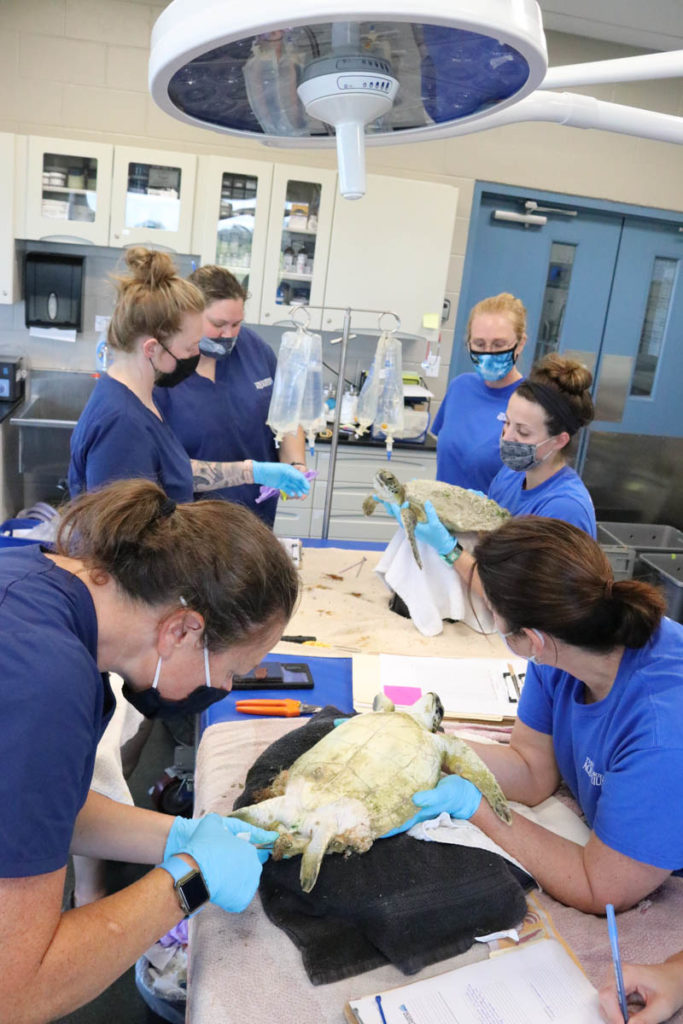It was a record-setting event for The Florida Aquarium when the team of animal care professionals admitted 17 sea turtles to the Sea Turtle Rehabilitation Center at the Center for Conservation campus in Apollo Beach, FL. A large cold-stun event on the east coast of Florida resulted in the single largest admission of sea turtles to The Florida Aquarium.
The patients, a group of green sea turtles, were rescued from the Volusia-Daytona area by the Florida Fish and Wildlife Conservation Commission (FWC) before being transferred to The Florida Aquarium. All are receiving specialized care to treat the effects of cold stunning as well as debilitation and severe epibiota coverage.
Cold-stunning occurs when cold-blooded animals, like sea turtles, are exposed to unusually cold water and/or air temperatures for an extended period of time; causing a hypothermic reaction that may include a lower heart rate, decreased circulation, lethargy, secondary infections including pneumonia and if left untreated, death.
“Care of these turtles includes close daily monitoring of severe anemia, loss of blood proteins and dehydration. Vitals such as heart rate, respiratory rate and body temperatures are closely watched to ensure continued improvement of these severely affected individuals,” said Dr. Lindsey Waxman, staff veterinarian for The Florida Aquarium. “Diagnostics, including ultrasounds, radiographs and blood work help diagnose secondary infections, pneumonia, organ disease and allow us to stay ahead of disease progression.”
The turtles were immediately started on antibiotics, IV treatments, fluid resuscitation and wound care treatments by veterinarians to help return them to health as quickly as possible.
“We pride ourselves on offering the highest quality care to all of our animals, especially our rescue and rehabilitated sea turtles,” said Ashley Riese, Sea Turtle Conservation Program Manager. “We strive to see every individual turtle make the journey back into the ocean.”
With gold standard parameters for exceptional care of three Kemp’s Ridley, five green turtles admitted earlier this month as well as these newest admissions, the team at The Florida Aquarium is ‘changing the game’ to provide specialized care, said The Florida Aquarium’s President and CEO, Roger Germann.
“With oversight from FWC, The Florida Aquarium is taking additional steps to ensure that we can continue to be a major contributor to sea turtle conservation in Florida and beyond,” added Germann.
Adjustments have been made at the Sea Turtle Rehabilitation Center to accommodate the growing number of endangered turtles that require critical care and the higher than normal numbers of cold stunned sea turtles washing up on the Florida coast this year.
“Our deep dive tank, which is generally used for larger turtles as well as those turtles further along in the recovery process, has been fitted with what are called ‘howdy huts’ or individual units; enhancing our ability to care for and monitor these younger and smaller animals in smaller contained spaces,” said Dr. Debi Luke, Senior Vice President of Conservation at The Florida Aquarium.
While large stunning events are happening in other parts of the country, turtles in our own backyard are also affected by cold waters and changing conditions; making the efforts of The Florida Aquarium to not only care for these endangered animals, but also to increase public awareness of the things they can do to protect the natural environment, even more critical.
All sea turtle rehabilitation work conducted by The Florida Aquarium is done with the approval of the U.S. Fish and Wildlife Service and the Florida Fish and Wildlife Conservation Commission (FWC) under conditions not harmful to marine turtles and authorized under conservation activities pursuant to FWC MTP-19-179.
#WomensHistoryMonth: The incredible effort of admitting and administering immediate care to this large group of turtles was conducted by an all-female team lead by Ashley Riese and Doctors Waxman and Luke.



